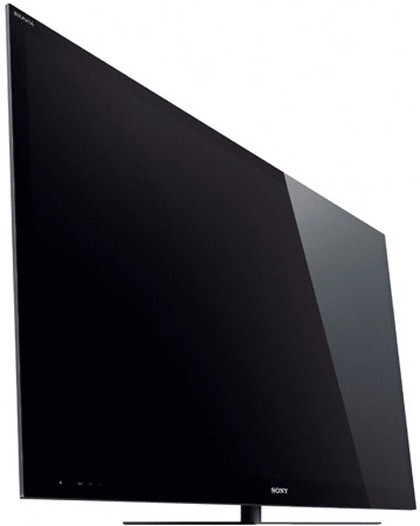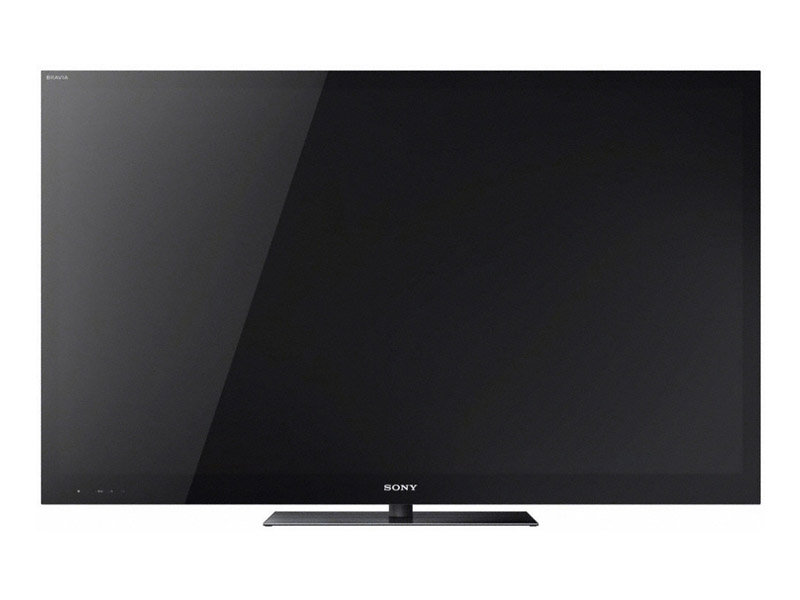Why you can trust TechRadar

The single biggest selling point of the 46HX923, at least where AV enthusiasts are concerned, is its direct LED lighting. Positioning the LED lights behind the screen rather than around its edges and then providing the processing power to separately control the light output of individual LED clusters should allow the set to deliver a 'real' contrast range streets ahead of anything possible using edge LED lights. And so far as most movie lovers are concerned, contrast is definitely king.
The 46HX923's design will also be a major selling point to a lot of people. Its direct LED system means it's not the thinnest TV ever, but it benefits from Sony's 'Monolithic' design, which finds the screen and its black bezel sharing the same single 'plane' and opulent glinting finish. It's less showy than some rival 'designer' TVs, but we suspect this will enhance rather than hinder its appeal to more conservative households.
Spinning the set round uncovers a more than satisfactory collection of connections. There are four HDMIs - a number that seems to have become pretty much standard in the upper echelons of the TV market - with other highlights of two USB ports, a D-Sub PC port, a LAN port and, best of all, built-in wi-fi.
Multimedia agogo
The USBs support recording of material from the built-in Freeview HD tuner and playback of a good selection of multimedia file formats, while the fact that the 46HX923 can be added to a PC or broadband network means you can use it to either stream in multimedia files from your PC or access Sony's Bravia Internet Video service.
The variety of file formats the TV can support is pretty robust, but the real star of the multimedia show has to be the Bravia Internet Video service. This is arguably the best online TV platform around, at least to the extent that it delivers so much of the sort of video content that appears best-suited to an 'Internet on your TV' experience.
Highlights include the BBC iPlayer and Demand 5 catch-up services, a Sky News video headline 'app', Sony's Qriocity movie database, a Sony TV 'archive', and LoveFilm. Even the pretty expansive raft of more 'b-list'/minority interest video services have more gems tucked away in them than you find with rival online video services.
Add in Skype, Facebook, Twitter, the music 'arm' of Qriocity and an open Web browser, and the 46HX923 really does offer an awful lot of 'extra-curricular' activities to keep you busy. Though this does also create a couple of usability problems, covered later in the Ease of Use section.
3D and video processing
The 46HX923 inevitably carries 3D playback capabilities. And as Sony has yet to jump aboard the passive 3D bandwagon, the 46HX923's 3D talents are of the active, full HD variety, with two pairs of Sony's chunky but actually reasonably comfortable glasses thrown in for 'free'.
Furthermore, unlike some of Sony's 2010 3D sets, the 46HX923's 3D transmitter is built into the main TV body, rather than being an optional external extra.
Another sign of the 46HX923's flagship status comes from its video processing. For it boasts both X-Reality Pro (the top tier of Sony's new X-Reality engine) and MotionFlow 800Hz, which uses a combination of a 200Hz panel, a scanning backlight and frame interpolation processing to deliver an 800Hz-like effect.
The Pro bit of X-Reality Pro refers to an extra bit of processing power especially designed to work its magic on internet video sources.
Sony doesn't trouble itself to seek the endorsement of any third party picture 'authorities' such as the Imaging Science Foundation (ISF) or THX. But this doesn't mean that the 46HX923 isn't well equipped with calibration tools - even if some of them (particularly the 'colour management' system) are rather non-standard in their presentation.
There's certainly enough setting flexibility to get pictures looking either very close to the key video standards if that's the way you like things, or very dynamic and punchy if you prefer to go that way. Or both if you like different settings for different types of viewing.
John has been writing about home entertainment technology for more than two decades - an especially impressive feat considering he still claims to only be 35 years old (yeah, right). In that time he’s reviewed hundreds if not thousands of TVs, projectors and speakers, and spent frankly far too long sitting by himself in a dark room.

